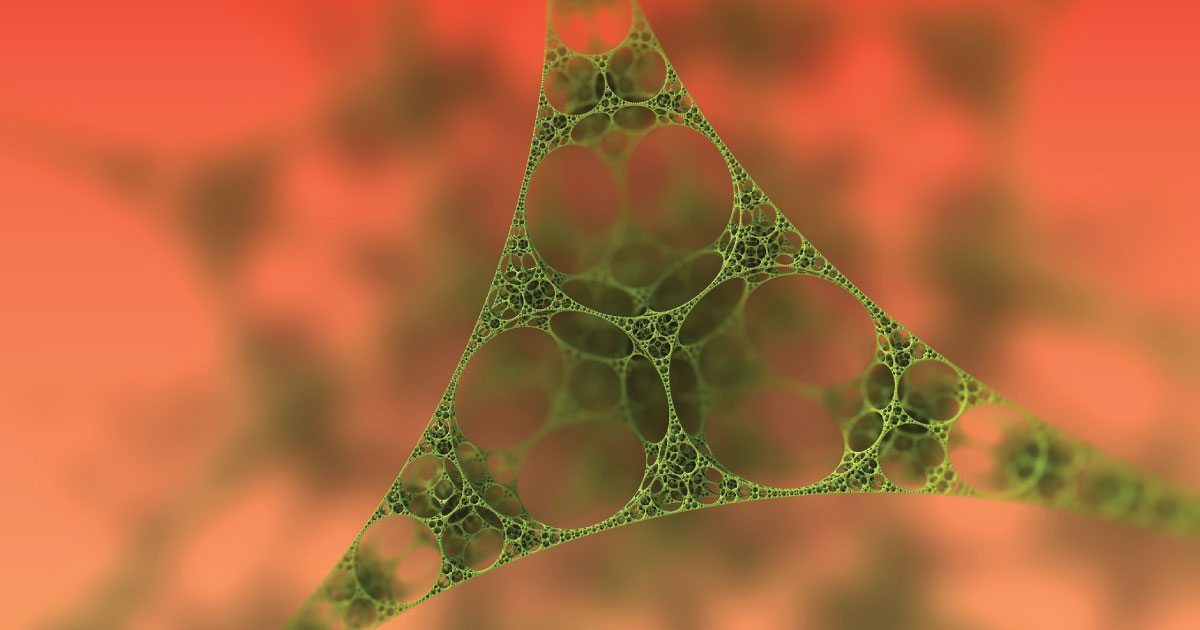Category: Featured News

Use of Nanoparticles in the Future May Gauge Progression of Mesothelioma, Increase Survival
Researchers have been tapping into nanoparticles, one of the newest cancer-fighting technologies, as a safe, effective means to treat cancers. MesotheliomaHelp has reported on the use of them as a microscopic drug delivery system to improve immunotherapy in mesothelioma patients. Now, one team of researchers reports they can use nanoparticles as a means to gauge whether a cancer is progressing by detecting even the smallest of tumors.
In hopes of finding an effective way to detect cancer cells in the earliest stages of metastases, researchers from Rutgers (https://news.rutgers.edu/faster-more-accurate-cancer-detection-using-nanoparticles-rutgers-led-study-finds/20171207#.WjF5q1WnHIU) University tested light-emitting nanoparticles in mice injected with human breast cancer cells. According to a Dec. 11 press release from Rutgers, the test was conducted using nanoprobes, or miniscule x-ray devices injected into the mice and carried through their bloodstream, allowing the researchers to “get a quick and reliable image of the location of affected cells in the body.”
“We’ve always had this dream that we can track the progression of cancer in real time, and that’s what we’ve done here. We’ve tracked the disease in its very incipient stages,” said Prabhas V. Moghe, a corresponding author of the study and distinguished professor of biomedical engineering and chemical and biochemical engineering at Rutgers–New Brunswick.
The researchers were able to distinguish even the tiniest of lesions and tumors just three to five weeks after the mice were injected. “The nanoprobes were significantly faster than MRIs at detecting” the growing cancer cells. Vidya Ganapathy, corresponding author and assistant research professor in the Department of Biomedical Engineering, believes this can translate to months when it comes to early detection of cancer in people.
Mesothelioma, an unusual form of cancer caused by exposure to airborne asbestos fibers, often has a complex growth pattern making complete surgical removal a very difficult task. Although the goal of the surgery is to achieve a macroscopically-complete resection, which refers to the removal of all visible tumor cells, determining if that was accomplished is not always possible.
“The Achilles’ heel of surgical management for cancer is the presence of micro metastases,” said Dr. Steven K. Libutti, director of Rutgers Cancer Institute of New Jersey. “The nanoprobes described in this paper will go a long way to solving these problems.”
The nanoparticles in this breakthrough discovery could be used to:
- Detect cancer early;
- Improve patient cure rates;
- Improve cancer survival times;
- Guide precise cancer treatment; and,
- Limit cancer metastasis.
All of the above benefits are a win for mesothelioma patients who often suffer from the aggressive growth and spread of the asbestos-caused cancer. Survival times for mesothelioma patients are often limited to a year due to the inability to track the fast-growing cancer cells.
There is much more research to be done, however, the Rutgers team is hopeful that this technology will be useful on all types of cancer, including mesothelioma. They anticipate availability of the product within five years.
Read the full study in the Dec. 12 issue of the journal Nature Biomedical Engineering (https://www.nature.com/articles/s41551-017-0167-9).

“Powerful” Pain Reliever On the Horizon for Mesothelioma Patients
Mesothelioma patients often suffer from unbearable pain from which they rarely get a break. Whether it is pain from the tumors or treatment, patients report it is this pain that most impacts their quality of life. Now, researchers report they have found a “powerful” pain reliever that could change the lives of the millions of Americans suffering from chronic pain.
Read about a clinical trial being conducted to assess whether radiation therapy can be an effective form of pain relief for mesothelioma patients.
https://clinicaltrials.gov/ct2/show/NCT01991938
A team of researchers at the University of Texas at Austin made it their mission to find an effective pain reliever that is safe, effective and non-addictive. With opioid addiction a national crisis, the chemists, led by Stephen F. Martin, Professor, Department of Chemistry at UT, turned to the experimental drug UKH-1114. In a study of mice with nerve damage, the team discovered that one small dose lasted for days as compared to hours like other non-opioid drugs, according to an Aug. 16 press release announcing the findings.
http://www.prweb.com/recentnews
When compared to the widely-used drug gabapentin, an alternative to opioids, often prescribed for neuropathic (nerve) pain from chemotherapy, shingles and diabetes, UKH-1114 required just one-sixth the dose for the same relief and did not cause any cognitive impairment. The drug binds directly to receptors in the central nervous system called the sigma 2 receptor.
Sigma-2 receptors not only affect motor function and emotional response, they may also affect cell proliferation and immune response.
“This opens the door to having a new treatment for neuropathic pain that is not an opioid,” said Martin. “And that has huge implications.”
MesotheliomaHelp has reported numerous times on neuropathy from the chemotherapy that is given to nearly all mesothelioma patients. Patients trying to manage the well-known side effects of nausea and fatigue, are often caught off guard by the unforeseen pain of chemo-induced neuropathy. Chemotherapy can cause nerve damage, leading to shooting pain, burning, tingling, numbness, problems with balance and grasping things, as well as cold or heat sensitivity. Neuropathy can also result from radiation and surgery, or from the tumor itself.
According to the National Institutes of Health, nearly one-third of all cancer patients who receive chemotherapy will be affected by chemotherapy-induced peripheral neuropathy, and it is a leading reason why people with cancer stop chemotherapy early.
The researchers are still trying to get a grasp on how the sigma 2 receptor relieves pain, and they report that there is still more work to “demonstrate safety, efficacy and oral bioavailability” of UKH-1114 before taking it to market. But the team is “excited by the compelling results” from their research.
“We started out just working on fundamental chemistry in the lab,” said co-lead James Sahn, a research scientist in the Department of Chemistry. “But now we see the possibility that our discoveries could improve the quality of people’s lives. That is very satisfying.”
Read more about the study in the June 23, 2017, issue of ACS Chemical Neuroscience.
http://pubs.acs.org/doi/abs/10.1021/acschemneuro.7b00200

BAP1 Gene Research Opens Door to Mesothelioma Clinical Trial
For years, Michele Carbone, MD, PhD, and a team of researchers from the University of Hawaii Cancer Center have focused their mesothelioma research on the BAP1 gene. The researchers suspected that mutations of the BAP1 gene, which is involved in tumor suppression, might underlie mesothelioma in people with a strong family history of the disease. Now, in a recent study, the team has uncovered the mechanism behind the gene and what makes people with it more susceptible to developing cancers from environmental carcinogens, such as asbestos.
The researchers found that the BRCA1-associated protein 1, or BAP1, regulates a channel (IP3R3) inside cells that moves calcium. When the BAP1 gene is damaged, calcium levels decrease leaving the cells more apt to become malignant after environmental carcinogen exposure, according to June 14 press release from the University of Hawaii Cancer Center.
The study also led to the discovery in mouse models that this same effect left the cancer cells resistant to chemotherapy. Mesothelioma cells have an uncanny ability to fight off even the most toxic anti-cancer agents, allowing the cancer cells to spread and thrive.
Mesothelioma, a cancer caused by past asbestos exposure, is diagnosed in nearly 3,000 Americans each year. These people are faced with a long road of ups and downs after a seemingly successful cycle of chemotherapy ultimately fails and the cancer returns. Due to the aggressiveness of the cancer and its resistance to treatments, mesothelioma oncologists then turn to another chemotherapy to again attempt to quash the cancer.
Once the UH researchers found the “why” behind BAP1 the team turned to finding the “how” to fix the channel that can effectively lead to apoptosis, or death of the cancer cells, when treated with chemotherapy or other anti-cancer therapies. Once BAP1 levels are restored and the calcium channels are stabilized, treating cancer patients with the BAP1 mutation, and potentially preventing cancer in the first place, is feasible, according to the report. A clinical trial is in the works to test the findings.
“We want to prevent and treat cancer in as many people as possible,” said Dr. Carbone. “We hope to start a clinical trial, within five years or less, to test the susceptibility to chemotherapy in patients with BAP1 mutated tumors.”
Carbone notes that close to 20 percent of all cancers have BAP1 mutations, including 70 percent of mesothelioma cases and 90 percent of eye melanomas.
According to the National Institutes of Health, clinical trials are at the heart of all medical advances. Clinical trials serve to uncover better ways to treat, prevent, diagnose and understand human diseases. They provide mesothelioma researchers with critical information needed to allow them to move their findings from the lab to patients. They also offer patients access to a treatment that might not otherwise be available.
“I very much hope that our discovery will help save many lives,” said Angela Bononi, co-author of the study and post-doctoral fellow in Carbone’s lab.
Find the full study in the June 22, 2017 issue of Nature.
Know more about Mesothelioma and how you can deal with it.

Solution to “Tumor Growth Paradox” May Lead to New Approach in Treating Mesothelioma
New research has shown that while for years scientists have been trying to find a treatment for cancer that forces cancer cell death, they may have been unknowingly encouraging the cancer cells to spread instead. In a new study, researchers found that by targeting resolvins this “tumor growth paradox” may be resolved. This finding may lead to a new approach in treating cancer, including Mesothelioma.
Researchers from the Institute of Systems Biology (ISB) in Seattle, Washington, report that when cancer cells are killed off “cellular debris” is left behind that can lead to an inflammatory response from the immune system, according to a Dec. 1 article in Medical News Today. The inflammation can actually put the immune system into overdrive where it is roped into stimulating more cancer cell growth.
Lead researcher Dr. Sui Huang believes researchers need to look beyond simply finding the best, fastest way to kill cancer cells, according to a press release from ISB announcing the findings. Using an analogy of comparing attacking cancer cells with military generals fighting the enemy, Dr. Huang said, “What politicians and military leaders have long learned, cancer research is now realizing: Look beyond just making killing more efficient. This new vista may open ample new opportunities for gentler, less toxic non-killing – but effective – anti-cancer drugs.”
The research focused on using resolvins, or natural compounds that stop inflammation, to clear out the debris left behind by the cells. Building on previous research that showed resolvin prompted immune cells “to eat up the dead cell debris” the team speculated resolvin would be effective when used to fight cancer. Using mouse models they found that when mice carrying “debris-induced tumors” were treated with resolvin it “drastically blocked growth of mouse tumors that chemotherapy failed to inhibit.” They concluded that combining chemotherapy with resolvin “showed maximal effect in animal tumors treated with standard drugs.”
Successfully halting cancer growth is critical for increasing survival in all cancer patients, and especially in mesothelioma patients who have a grim prognosis. Mesothelioma is a rare, aggressive form of cancer caused by past asbestos exposure that is notorious for fighting off even the most seasoned cancer treatments, including chemotherapy, radiation.
“These results demonstrate that enhancing endogenous clearance of tumor cell debris is a new therapeutic target that may complement cytotoxic cancer therapies,” the researchers concluded.
Each year, nearly 3,000 Americans are diagnosed with mesothelioma. There is no known cure for the disease.
Read the study in the Nov. 30 issue of the Journal of Experimental Medicine.
Sources:
- Journal of Experimental Medicine
http://jem.rupress.org/content/early/2017/11/29/jem.20170681 - (Researchers from the Institute of Systems Biology) ISB
https://www.systemsbiology.org/news/2017/11/30/cancer-debris - Medical News Today
http://www.medicalnewstoday.com/releases/313580.php

Mesothelioma Patients and Their Caregivers Benefit From Yoga
According to the National Cancer Society, exercise is an important part of cancer treatment and recovery. Exercise can help patients feel better physically, improve their appetite, loosen stiffened joints, as well as improve their mood. While many mesothelioma patients do not have the stamina or strength to walk, yoga can offer these same benefits – and maybe more. A recent study reports that yoga “provides physical and mental benefits for both lung cancer patients and their caregivers.”
Researchers from the University of Texas MD Anderson Cancer Center set out to find interventions for families facing a poor cancer prognosis and to examine mind-body techniques as supportive care strategies. Led by Kathrin Milbury, PhD, an assistant professor of cancer medicine in the Department of Palliative Care and Rehabilitation Medicine, they turned to yoga as a “a gentle form of exercise,” and for the ease in modifying poses for patients and for adapting it for partner participation.
In the feasibility study focused on physical postures, breathing exercises, and meditation, the team offered patients and their caregivers 15, one-hour yoga sessions, according to a press release announcing the initial results of the study. The poses included chest-opening moves that incorporated stretching the chest area with deep breathing practice. All of the patients in the study had inoperable non-small cell lung cancer and were undergoing thoracic radiation therapy and chemotherapy. The patients completed a quality-of-life survey and a six-minute walking assessment. 26 patient/caregiver pairs took part, completing a mean of 12 classes.
“It is never too late to engage in exercise, and we know from earlier studies that people can exercise while being treated with chemotherapy or radiation,” said Dr. Milbury. “Caregivers sometimes have more anxiety and sleeping problems than patients. Therefore, we thought that having the patient and caregiver go through yoga instruction together would be beneficial for both partners.”
The patients who took the yoga classes “had significantly better physical function as assessed by the 6-minute walking test,” better stamina for performing daily activities, as well as improved mental health. The caregivers reported improvements in fatigue and stamina.
Mesothelioma is an incurable cancer of the lining of the lungs, abdomen or heart caused by past exposure to asbestos. Research has shown that patients who focus on the power of the mind-body connection and choose to be optimistic and positive will realize a higher quality of life and may respond better to treatments. In addition, cancer patients who practice yoga and stay active by walking or getting outside are shown to have less stress and anxiety than those who remain sedentary.
According to WebMD, regular yoga practice can “lead to significant improvements in sleep for people who have undergone cancer treatment.” In a study conducted by the James P. Wilmot Cancer Center, University of Rochester Medical Center, researchers found that yoga was effective in improving sleep quality and sleep efficiency in cancer patients.
“We demonstrated that patients undergoing treatment for lung cancer are not too sick to participate in a behavioral supportive care intervention,” said Dr. Milbury. “Both patients and caregivers reported to have enjoyed the experience, and it gave them a time away from cancer, and [they] learned something new together.”
The research will be continued with a more diverse group of patients.
Prior to beginning any fitness routine, mesothelioma patients should discuss their options with their doctors.
Visit MD Anderson Cancer Center’s website to find out more about the yoga study. The results were presented at the 2017 Palliative And Supportive Care In Oncology Symposium held Oct. 27-28 in San Diego, CA.
Free Mesothelioma Patient & Treatment Guide
We’d like to offer you our in-depth guide, “A Patient’s Guide to Mesothelioma,” absolutely free of charge.
It contains a wealth of information and resources to help you better understand the condition, choose (and afford) appropriate treatment, and exercise your legal right to compensation.
Download Now